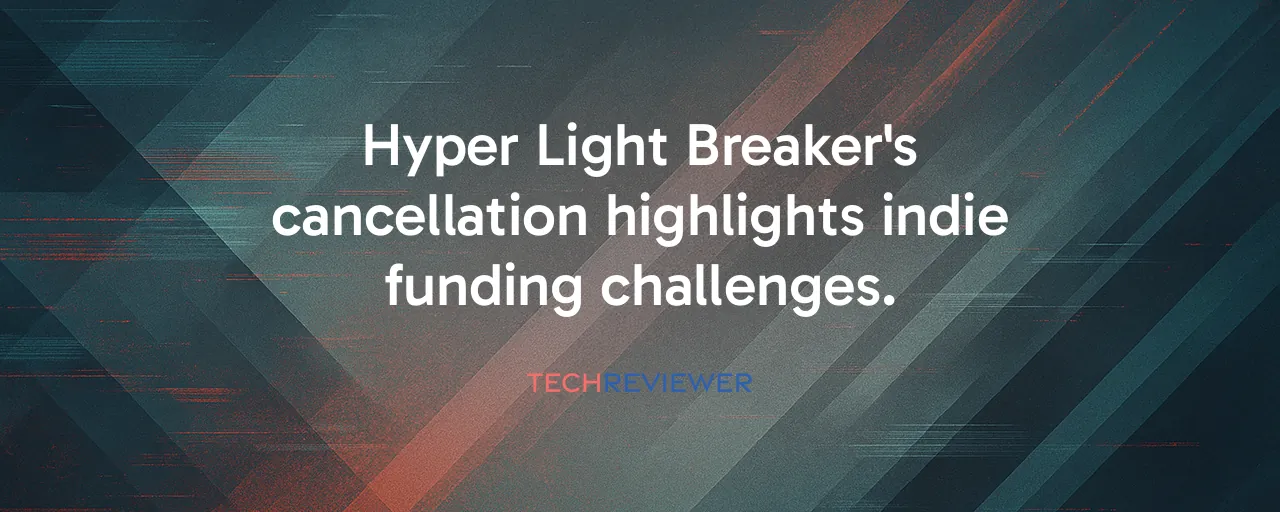A Promising Prequel's Abrupt End
Heart Machine's Hyper Light Breaker, a prequel to the beloved 2016 hit Hyper Light Drifter, launched in January 2025 with high hopes. The game promised a bold leap from 2D pixel art to a 3D open-world roguelite, complete with hoverboard traversal and cooperative multiplayer. Nine months later, the studio announced it would halt development and lay off staff, citing funding challenges and industry consolidation. Players who backed the early access release now face a game that will never reach its full vision, though a final update is planned for January 2026 to offer some closure.
The Indie Funding Trap
Making games isn't cheap, and for small studios like Heart Machine, securing funds is a constant battle. The indie sector faces a brutal reality: development costs have spiked by 30 percent, with budgets now ranging from $500,000 to $3 million. Hyper Light Breaker's early access sales, estimated at 77,000 to 180,000 copies, likely generated $1.5 to $5.4 million. After platform fees and refunds, this revenue couldn't sustain a multi-year project, especially with mixed reviews dragging sales down.
Publishers are growing cautious, often demanding developers prove market traction before signing deals. Crowdfunding, once a lifeline for indies like Hyper Light Drifter, which raised nearly $650,000 on Kickstarter, is no longer a guaranteed path. The industry's consolidation, like Microsoft's $68.7 billion Activision acquisition, leaves fewer mid-tier publishers willing to take risks on small studios. For Heart Machine, this meant leaning on early access revenue, a gamble that didn't pay off.
When Early Access Goes Wrong
Early access lets developers fund projects by selling incomplete games, but it's a tightrope walk. Hyper Light Breaker launched with core systems but lacked polish, earning a 67 percent Steam review score and a 4/10 from IGN. Players complained about frame rate drops, clunky controls, and a punishing difficulty tuned for multiplayer, which frustrated solo players. These issues created a negative first impression that the studio couldn't overcome, despite planned updates.
Compare this to Baldur's Gate 3, a shining example of early access done right. Larian Studios launched with a robust core experience, earning over 90 percent positive Steam reviews early on. Transparent communication and steady updates built trust, leading to millions of sales. Hyper Light Breaker's struggles highlight a key lesson: early access games need strong initial content to avoid alienating players, as negative reviews can cripple long-term success.
The Tech Behind the Tumble
Shifting from 2D to 3D was a massive leap for Heart Machine. Hyper Light Breaker's procedural generation aimed to create replayable worlds, but players found the maps repetitive and disorienting, with low-resolution textures and blurry visuals. Optimizing performance for 3D environments and multiplayer networking stretched the studio's resources thin. In contrast, Hades blended hand-crafted elements with procedural systems for cohesive roguelite runs, while Hyper Light Breaker's algorithms lacked the polish to keep players engaged.
The game's cooperative focus added complexity. Balancing difficulty for both solo and team play proved tricky, with solo players facing brutal encounters designed for groups. Heart Machine's small team struggled to address these technical gaps while maintaining the artistic vision that made Hyper Light Drifter a standout. Ambitious tech shifts demand resources and expertise that small studios often lack.
A Broader Industry Crisis
Heart Machine's layoffs are part of a grim trend, with over 45,000 gaming jobs lost from 2022 to mid-2025. A 2025 Game Developers Conference survey found 11 percent of developers faced layoffs last year, driven by restructuring and declining revenue. These cuts hit hard, stripping away years of expertise and destabilizing creative talent. For players, Hyper Light Breaker's end raises questions about early access risks, where purchases fund unfinished games with no completion guarantee.
Despite this, there's hope. Successful indies like Hades and Vampire Survivors show that focused design and community engagement can break through market saturation. Studios might find stability through collectives, sharing costs for tools and marketing, or by tapping government grants. The roguelite genre, projected to hit $2 billion by 2034, still offers opportunities for those who nail the balance of innovation and polish.
What's Next for Indie Gaming
Hyper Light Breaker's failure doesn't spell doom for indie games, but it's a wake-up call. Studios need sustainable funding models, whether through cautious project scoping or new partnerships. Heart Machine's upcoming title, Possessor(s), set for release on November 11, 2025, with Devolver Digital, could be a chance to rebuild. Its success will hinge on learning from past mistakes, like ensuring polish and clear player expectations from day one.
Players should approach early access with eyes open, supporting projects with strong initial offerings. The indie scene thrives on bold ideas, but survival demands balancing ambition with execution. As the industry consolidates, small studios must find creative ways to stand out, proving that even in a crowded market, a great game can still shine.
